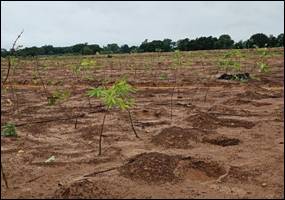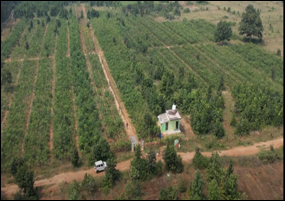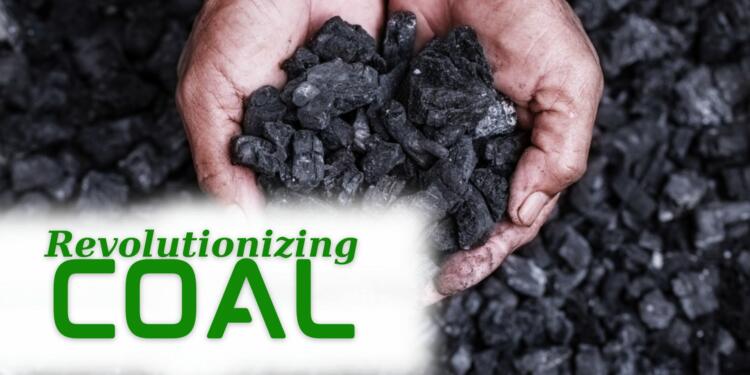In an era marked by a growing urgency for sustainable development, the coal sector in India is witnessing a transformative shift towards eco-friendly practices and infrastructure enhancement. Spearheading this change are the First Mile Connectivity Projects initiated by South Eastern Coalfields Limited (SECL) in Chhattisgarh, a testament to the nation’s commitment to energy security and environmental stewardship.
First Mile Connectivity Projects Outline
These projects, including the Dipka, Chhal, and Baroud OCP Coal Handling Plants, stand as beacons of innovation, blending cutting-edge technology with eco-conscious methodologies. Aligned with the PM GatiShakti National Master Plan, they not only bolster multi-modal connectivity and coal infrastructure but also pave the way for socio-economic empowerment, generating local employment opportunities and fostering regional development. Complementing these endeavors is the Miyawaki plantation method, heralding a new era of ecological restoration and biodiversity conservation in coal mining areas. As the coal sector embraces sustainable initiatives, the stage is set for a greener, more resilient future, underpinned by scientific expertise and community collaboration.
Dipka OCP Coal Handling Plant
Location: SECL’s Dipka Area
Features: Overground bunker capacity of 20,000 tons and 2.1 km long conveyor belt
Capacity: Annual coal handling capacity of 25 MT
Eco-friendly Aspects:
- Minimizes road-based coal movement, reducing carbon emissions
- Rapid loading system speeds up the loading process, reducing rake loading time to less than an hour
Contribution to Operational Efficiency and Environmental Benefits:
- Enhances operational efficiency by streamlining loading processes
- Reduces carbon emissions and environmental impact through eco-friendly transportation
Chhal OCP Coal Handling Plant
Location: SECL’s Raigarh Area
Features: Overground bunker, Conveyor belt spanning 1.7 km, Silo with a capacity of 3,000 tons.
Capacity: Handles 6 MT of coal annually
Eco-friendly Aspects: Similar to Dipka OCP, minimizes road-based coal movement and reduces carbon emissions
Contribution to Operational Efficiency and Environmental Benefits:
- Improves operational efficiency by facilitating efficient coal handling and transportation
- Contributes to environmental conservation through reduced carbon emissions and minimized road transportation
Baroud OCP Coal Handling Plant
Location: SECL Raigarh Area
Features: Overground bunker capacity of 20,000 tons and 1.7 km conveyor belt.
Capacity: Handles 10 MT of coal annually
Eco-friendly Aspects: Designed to minimize road-based coal movement, reducing environmental impact
Contribution to Operational Efficiency and Environmental Benefits:
- Enhances operational efficiency by improving loading processes and reducing loading time
- Contributes to environmental sustainability by minimizing carbon emissions and promoting eco-friendly transportation
Alignment with PM GatiShakti National Master Plan
National Infrastructure Development Plan Alignment
The projects align with the PM GatiShakti National Master Plan, which focuses on enhancing infrastructure across various sectors, including coal. They contribute to the development of robust coal infrastructure, essential for energy security and sustainable development.
Focus on Multi-modal Connectivity and Enhancing Coal Infrastructure
These projects emphasize the importance of multi-modal connectivity by facilitating efficient coal evacuation through mechanized handling and transportation. They enhance coal infrastructure by incorporating modern technology and eco-friendly practices, aligning with the national agenda for sustainable development.
Socio-Economic Impact
The First Mile Connectivity Projects initiated by South Eastern Coalfields Limited (SECL) in Chhattisgarh not only contribute to the region’s energy security but also significantly impact its socio-economic landscape. One of the notable aspects of these projects is the generation of local employment opportunities. The construction and operation of coal handling plants require a diverse workforce ranging from skilled laborers to engineers, thereby providing job opportunities for the local population. Moreover, ancillary services such as transportation, maintenance, and support facilities further contribute to employment generation, thereby improving livelihoods and boosting the local economy.
Efficient energy supply facilitated by these projects also plays a crucial role in socio-economic development. Reliable access to electricity is vital for various industries, businesses, and households. By ensuring a steady and efficient supply of coal, these projects support the functioning of industries dependent on coal-based energy, thus fostering economic growth and development in the region. Additionally, improved energy infrastructure attracts investment, stimulates economic activity, and enhances the overall quality of life for residents.
Also Read: From blasts to blossoms: PM Modi’s vision transforms J&K post 370
Environmental Sustainability in the Coal Sector
Coal/Lignite Public Sector Undertakings (PSUs) have undertaken several initiatives to promote environmental sustainability in the coal sector. One of the primary initiatives includes extensive plantation programs aimed at greening and reclaiming land affected by mining activities. These programs involve the plantation of native species in various areas such as overburden dumps, mine peripheries, and residential colonies. Collaborations with scientific institutions ensure the selection of appropriate species and the implementation of multi-tiered plantation schemes, enhancing the success and sustainability of reclamation efforts.
The diversity of plant species chosen for plantation serves multiple ecological purposes. Shade-giving trees, fruit-bearing species, medicinal plants, and timber value trees contribute to biodiversity conservation while providing additional socio-economic benefits to local communities. Moreover, collaborations with state forest departments ensure the selection of plant species suited for the local ecosystem, promoting ecological balance and resilience.
Miyawaki Plantation Method
The Miyawaki technique is an innovative approach to afforestation and ecological restoration pioneered by Japanese botanist Dr. Akira Miyawaki. Its primary goal is to establish dense forests within a limited area rapidly. Unlike traditional methods, which can take decades or even centuries to achieve similar results, the Miyawaki method focuses on planting a variety of indigenous tree species at high density to mimic the structure and biodiversity of natural forests.

Goals of the Miyawaki Technique
- Rapid establishment of dense forests.
- Restoration of native biodiversity.
- Creation of self-sustaining ecosystems.
- Carbon sequestration and mitigation of climate change.
- Improvement of soil quality and water retention

Rapid Growth and Self-Sustainability Features
- The high-density planting and selection of native species create favorable conditions for rapid growth.
- The diverse range of species promotes mutual support and symbiosis, accelerating growth rates.
- Once established, Miyawaki forests require minimal maintenance due to the self-sustaining nature of the ecosystem.
Implementation in Coal Mining Areas
Coal/Lignite PSUs have embraced the Miyawaki method as part of their sustainable greening initiatives in mining areas. Examples include the application of the Miyawaki technique in the Kulda Open Cast Project (OCP) of Mahanadi Coalfields Limited (MCL) in Subalaya village, Sundergarh range.
Future Prospects
Sustainable initiatives like the Miyawaki plantation contribute to ecological restoration, carbon sequestration, and biodiversity conservation in coal mining areas. The success of such projects demonstrates the potential for further expansion and replication across coal mining regions. Continued investment in scientific expertise and community engagement is essential for driving sustainable development and mitigating environmental impacts in the coal sector.
In conclusion, the integration of eco-friendly technologies and sustainable practices in the coal sector heralds a promising future for India’s energy landscape. With the implementation of First Mile Connectivity Projects and the adoption of Miyawaki plantation methods, the sector not only enhances operational efficiency but also mitigates environmental impact and promotes socio-economic development. As these initiatives continue to expand and replicate across coal mining regions, they underscore the nation’s commitment to achieving a balance between energy security and ecological sustainability for generations to come.
Also Read: Modi-fied Uttar Pradesh: A Journey Through Innovation and Ingenuity































